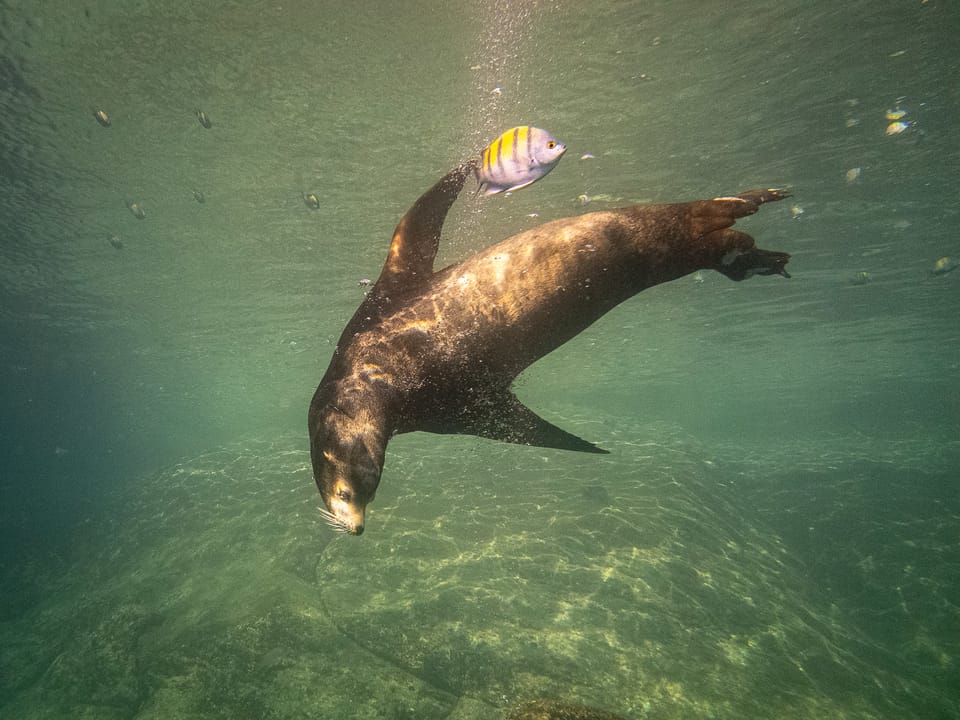Addressing Marine Pollution

Looking out over the ocean, it may appear pristine and untouchable due to its immense size. Unfortunately, that’s not the case. There’s an urgent need to combat marine pollution on a global scale.
Air
Over 90% of traded goods are shipped by water and the volume is expected to triple by 2050. Ships transporting goods for 18 multinationals, including Walmart, Target and Home Depot, “emitted about 3.5 million metric tons of greenhouse gases in 2021, about as much as the annual climate pollution from 750,000 passenger cars.” The ships “also released thousands of metric tons of cancer- and asthma-inducing nitrous oxide and particulate matter into port communities.” The pollution is caused by the shipping companies’ reliance on carbon-intensive heavy fuel oil. Some companies are investigating alternatives, but heavy fuel oil is cheap and abundant – the alternatives aren’t and they would require new port infrastructure.
Noise
The growth of the shipping industry and off-shore oil and gas drilling have raised underwater noise levels significantly. This is a huge problem for marine mammals such as dolphins and whales that rely on echolocation and whistles to forage cooperatively. It can also lead to increased stress, deafness, impaired brooding and nest care, and higher mortality rates.
If ships were to reduce their speed, it would reduce noise levels, wildlife collisions, and emissions. Quieter propellers, insulated engines, and cleaner hulls and propellers would also reduce underwater noise. Many of these strategies are already employed by military ships.
Light
Urban development is increasingly exposing oceans to light pollution, particularly around large cities. Offshore wind farms, oil and gas rigs, ships at sea, and island development also create high levels of maritime light pollution. A recent survey showed that “at a depth of 1 metre, light pollution affects 1.9 million sq km of the world’s coastal seas” and may reach as far down as the seafloor. Light pollution makes it easier for predators to track small fish; interferes with circadian rhythms governing migration, breeding, and feeding; interferes with sea turtle nesting and hatching; and masks the natural cycles of the moon.
Chemicals
There’s been a lot of talk about plastic pollution in the world’s oceans, but it’s not the only problem. Over 35,000 different chemicals are produced world-wide and increasing numbers of them end up in rivers, estuaries, and seas. There has been very limited analysis of their impact, although we do know that fertilizer run-off causes dead zones.
The Back to Blue Initiative is “calling on scientists, research funders, policymakers, investors and business leaders to join the conversation about how to spearhead a coordinated global response to marine pollution and to co-design a roadmap by 2025 to close the marine pollution data gap.” The Invisible Wave, published in March 2022, provides a historical overview of the stakeholders and sources of chemical pollution.
Surfrider Foundation has been advocating for the protection and enjoyment of the world’s oceans and beaches for over 35 years and has been active in addressing coastal development, pollution, and right to access through education, advocacy, and lawsuits. Surfrider Canada’s Ocean Protection Initiative addresses gaps and issues in Canada’s spill response regime for cargo container spills and participates in regional ocean planning in British Columbia.
Cruise Ships
Cruise ships the size of small towns create an inordinate amount of pollution. A one-week cruise to Alaska and back results in 1 million litres of human sewage, 8.7 million litres of untreated greywater, 200 million litres of toxin-laden scrubber washwater, 95,000 tonnes of oily bilgewater, 8 tonnes of garbage, and more than 500 litres of hazardous waste. Much if not all of it will be illegally discharged in the ocean. Canada has lagged behind the United States in controlling cruise ship pollution, leading to cruise ships discharging their waste in Canadian waters rather than American.
Marine Protected Areas
On March 4, 193 nations agreed to support a treaty to protect the world’s oceans. While still requiring formal adoption by the United Nations and ratification by individual countries, the High Seas Agreement is a significant step forward. Employing a research-based protocol, it’s designed to create marine protected areas in international waters and would require environmental impact assessments for all new activities, including tourism, on the high seas.
In February 2023, the Canadian government announced minimum protection standards for federal marine protected areas. The standards prohibit oil and gas activities, bottom trawling, and mining. Additional restrictions on dumping have also been proposed although they will only be mandatory in territorial waters.
Additional Resources
Marine Pollution Explained [National Geographic]
Urban Light Pollution is a Danger for Marine Ecosystems – New Research [The Conversation]
Underwater Noise Pollution: Deafening, Dangerous and Deadly [Ocean Care]
Drones Gather New and Useful Data for Marine Research, But They Can Disturb Whales and Dolphins [The Conversation]
UN Reaches Historic Agreement to Protect the World’s Oceans [Grist]
Pacific Coast Seaweed [EcoFriendly West]
Photo credit: https://www.flickr.com/photos/apmckinlay/52493165836
EcoFriendly West informs and encourages initiatives that support Western Canada’s natural environment through its online publication and the Nature Companion website/app. Like us on Facebook, follow us on Twitter, or subscribe by email.

Member discussion